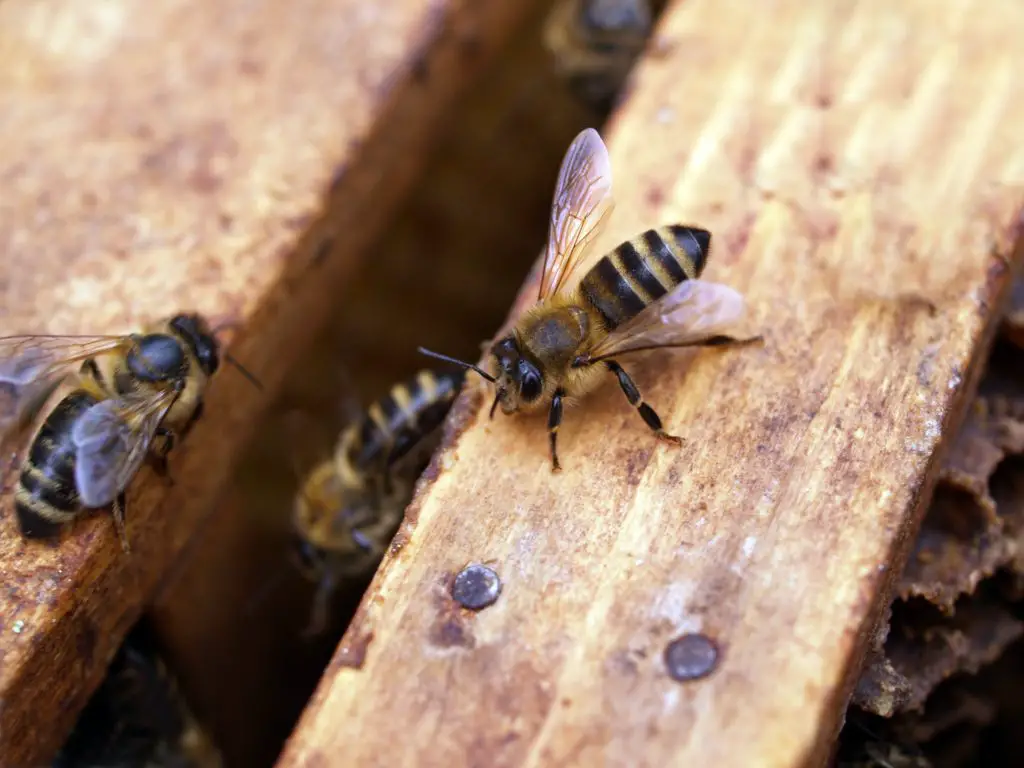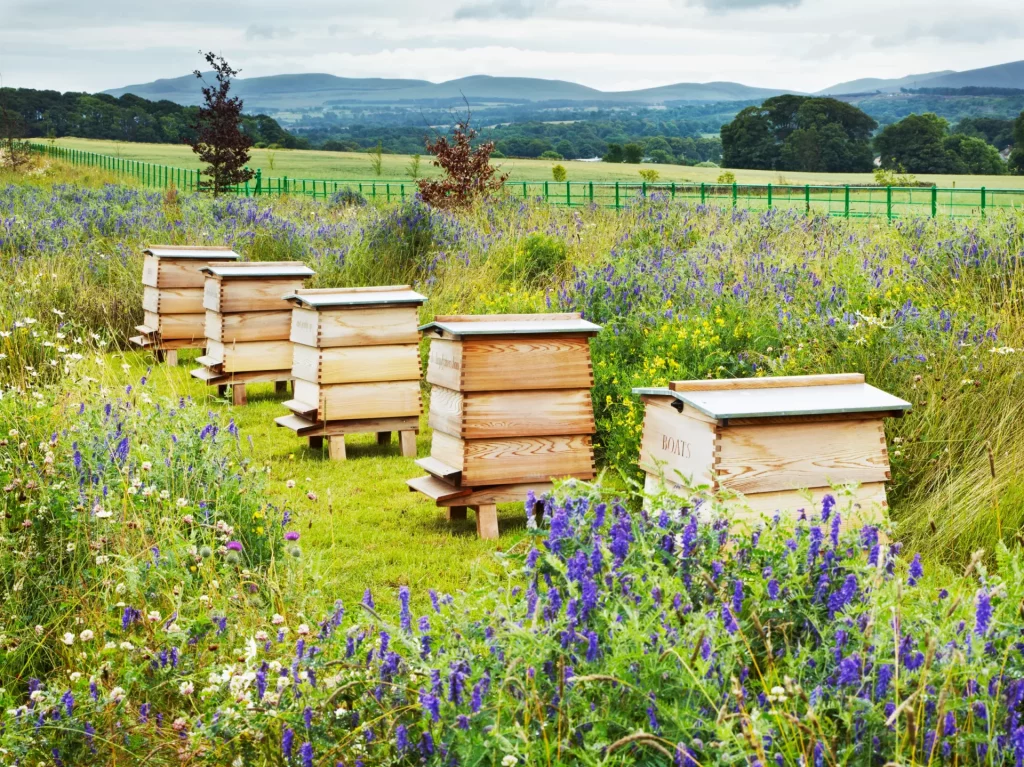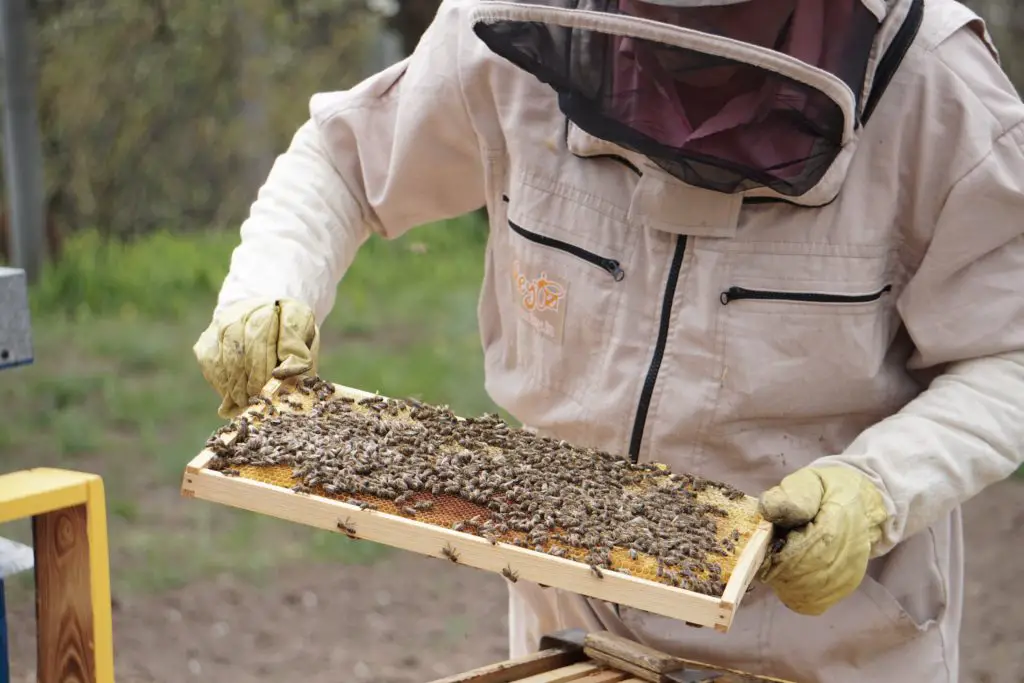Affiliate Disclaimer - As an Amazon Associate I earn from qualifying purchases.
It supports the website. So, Thank you
If you have just started a new beehive then it’s an exciting time. You’re likely looking forward to caring for your bees and observing them as they go about their business. And let’s not forget that sweet, tasty honey you’ll harvest.
But what can you expect as a new beekeeper and how long does a beehive last? Is this going to be a long-term commitment or simply a hobby for the summer?
A honey beehive can last indefinitely. As long as the conditions are right inside the hive and the bees are able to hibernate over winter, there’s no reason that they won’t go from strength to strength as each year passes.
But there are factors that could upset the hive and cause it to die off sooner than expected, which is why it’s essential to take good care of the hive.
Table of Contents
Understanding The Life Cycle Of A Honey Bee In The Hive
How long a honey bee lives vastly depends on several factors. One of these factors is the type of honey bee you’re looking at. For example, a worker bee might only live for around six weeks and this would be during the honey season. During this time, they will spend most of their lives foraging, feeding bee larvae and, of course, making honey.
But when one generation of worker bees dies, this doesn’t mean that the whole hive will collapse. The important thing is that the hive has a lot of different types of bees within it. There are three different types of bees that you’ll find in a honey beehive; the queen, worker bees and drones.
Queen Bees
You’ve probably heard the term queen bee thrown around even if you’re totally new to beekeeping as it’s something that’s used in many different ways. When it comes to honey bees, the queens are responsible for populating the hive by producing eggs. These bees live much longer than the worker bees we just mentioned with some living up to three years.
During her lifetime, a single queen can lay thousands of eggs. What’s truly fascinating is that these bees can lay eggs that go unfertilized but still hatch into a drone.
Drone Bees
A drone, or quite simply, a male bee’s sole purpose is to mate with the queen of the hive. How long these bees live really depends on their mating success. Once a drone matures, he will mate with the queen and soon after this, he will die.
However, his life won’t be much longer if he doesn’t mate with the queen. If he isn’t successful in mating then he will be kicked out of the hive and forced to survive on his own. The problem is that bees are designed for a life of solitude so the drone won’t survive for very long. If he doesn’t die of starvation during the summer, he will almost certainly freeze to death when winter rolls around.
Worker Bees
The workers are the smallest types of bees in your hive but the numbers are much greater. In fact, a single hive could have up to 80,000 worker bees! Even in smaller colonies, you would expect there to be at least 20,000 of these bees.
As we have mentioned, worker bees will live for around six weeks and they live a life of hard graft! However, their lifespan can be affected by other things such as how much pollen they consume and how active the bee is. The more energy the bee expends, the shorter its life is likely to be.

What Happens If The Queen Bee Dies?
In the most basic terms, a hive cannot survive without a queen so unless a new queen is found, the hive will cease to thrive and this might only take a few weeks.
Each hive only has a single queen at any one time and she is the bee that’s responsible for populating the entire hive. Without her, no new bees would be produced and eventually, the hive would die off. However, with a queen constantly laying new eggs, a hive could go on forever as long as the conditions are right.
But the queen doesn’t only lay eggs. She also gives off pheromones that encourage the other bees to keep working which also ensures a good lifespan for the hive. When the queen dies, the other bees may fall into disorder!
It is possible for the queen to become sick and when this happens, the rest of the colony will notice. As you gain more experience with your hive, you will notice that the bees make a different sound when something is wrong. This is often because the queen is sick. When the bees realize that there is a problem with the queen, they will raise a new one but this doesn’t happen immediately and could take a couple of weeks.
After this, the new queen may take a further few weeks before she is ready to lay eggs so the hive could be vulnerable for around five weeks. During this time, it’s really important to keep a close eye on the hive to ensure its survival.
If you notice that things aren’t looking up then it is possible to buy a ready-mated queen which you can put into the hive. You might also take frames from other established hives to boost the numbers and number of eggs in the hive you’re trying to save.
How To Stop A Beehive From Dying
Since your beehive can be an indefinite structure in your yard, it’s important to make sure that no problems arise. This can be achieved by regularly checking your beehive. But the last thing you want to do is keep opening the hive every day; this will only upset the bees. Moreover, if you keep opening it in cold weather, this can lead to the bees freezing due to lost heat.
In the summer months, you can open the hive around once a week and look for signs of disease or pest infestation. There are some things that cannot be cured such as AFB but if there are signs of pests then you’ll normally be able to get on top of the problem using bee-approved pesticides or pest traps.
In winter, it is best to avoid opening the hive at all, where possible. Listening to the hive after gently tapping on the side will tell you if there is healthy activity inside. If you don’t hear a buzz then you may need to open the hive and take a quick look. Otherwise, it’s best to leave the bees alone and check them as soon as the weather warms up in spring.
Conclusion
There is no reason that a beehive shouldn’t stand the test of time. While beehives are susceptible to pests and diseases, it is up to the beekeeper to make regular checks to ensure this doesn’t happen.
Worker bees don’t have a hugely long lifespan but provided the bee population within the hive is thriving, there’s no reason that new generations won’t be continually produced. With the right conditions, your beehive may last indefinitely.
However, you should keep in mind that the hive will become particularly vulnerable in the event that the queen dies. While the other bees will raise a new queen, this can take time so you will need to make sure that you monitor the hive and intervene when it is necessary.




